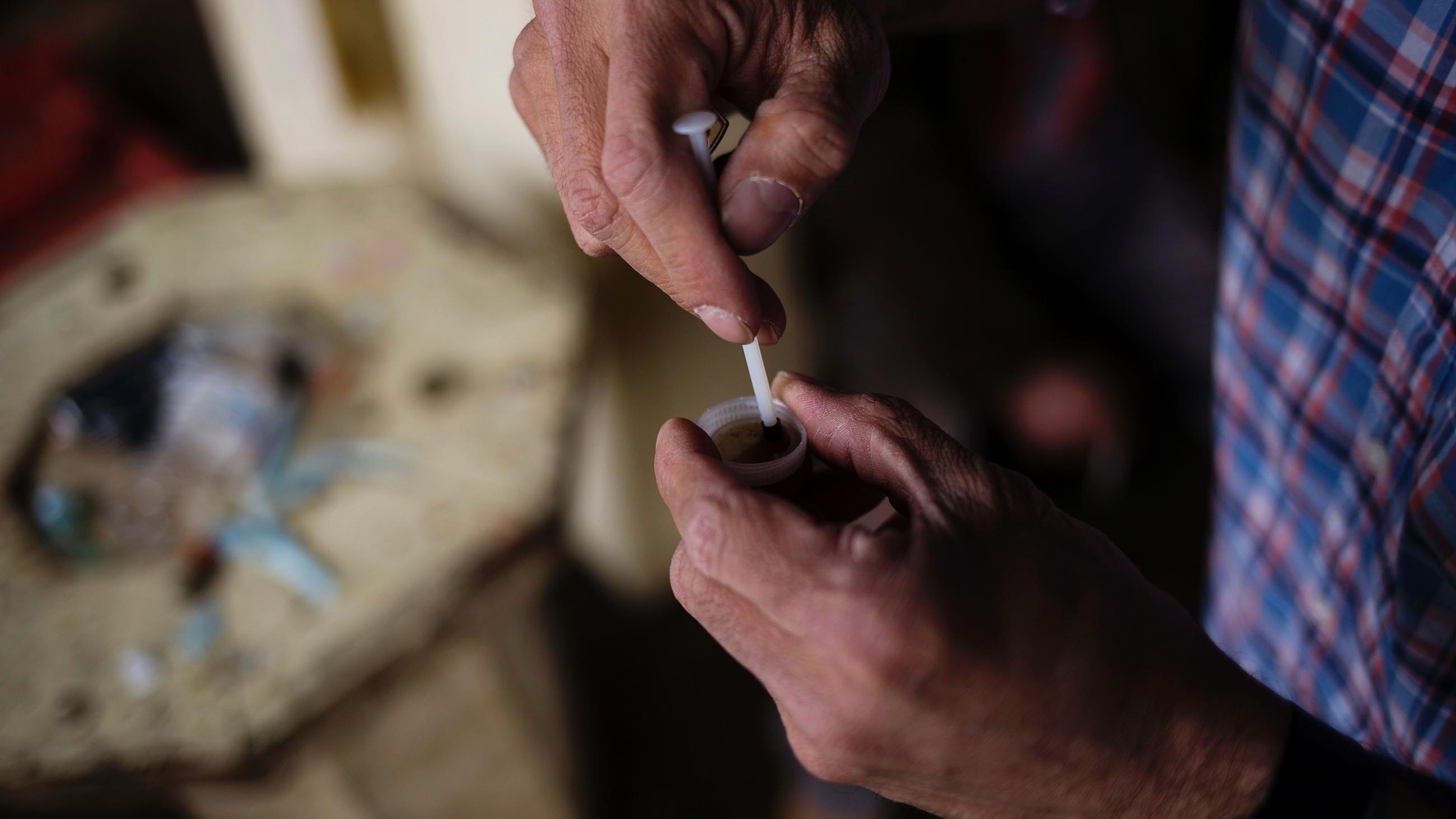The AP Learns to Talk About Addiction. Will Other Media Follow?
For years, people with addiction have wondered when the media would recognize our condition as a medical problem, not a moral one — when they would stop reducing us to mere “addicts” and speak of us in the more respectful and accurate “person first” language that has become common for people with other diseases and disorders.

Last week, The Associated Press took an important step in that direction. The new edition of its widely used AP Stylebook declares that “addict” should no longer be used as a noun. “Instead,” it says, “choose phrasing like he was addicted, people with heroin addiction or he used drugs.” In short, separate the person from the disease.
The style guide clarifies other important language to maximize precision and reduce bias in addiction coverage. There are new entries on “alcoholic,” and an array of substances, from bath salts and cocaine to PCP and synthetic cannabis.
Unlike many matters of style, these changes aren’t mere semantics or political correctness. Widespread media misunderstanding of the fundamental nature of addiction has led to some deadly misconceptions about how it should be managed. The AP provides news to around 15,000 media organizations and businesses, and its stylebook is highly influential in setting standards for usage. If its more accurate terms are adopted and understood by institutions like The New York Times and CBS News, it could genuinely help improve drug treatment and policy amid an overdose crisis that shows no signs of slowing.
“Around the beginning of the year, in January, we noticed that there was a hole in our guidance on addiction,” says Jeff McMillan, an AP enterprise editor who was the lead author of the new section. He adds, “As we began talking to experts, we learned that the language that was traditionally used is changing, and we thought it would be good to give people a vocabulary.”
The new language is being widely welcomed. “It’s very good — really well done,” says John Kelly, an associate professor of psychiatry at Harvard and founder and director of the Recovery Research Institute at the Massachusetts General Hospital. Kelly was the lead author of a study published in 2010 that showed that even doctoral-level professionals take a more punitive stance when patients are described as “substance abusers” rather than “people with substance use disorder.”
The stylebook directs its users to “avoid words like abuse or problem in favor of the word use with an appropriate modifier such as risky, unhealthy, excessive, or heavy. Misuse is also acceptable.” Notably, it adds that not all risky use involves addiction — a distinction that has been clear to epidemiologists for decades, but has not often been noted by the press.
And perhaps most important, the new style specifies that journalists should not use “dependence” as a synonym for addiction. In fact, “substance dependence” was dropped as the official diagnosis for addiction by psychiatry’s diagnostic manual, the DSM, in 2013, in part because it erroneously implied that the two are the same.
While the AP doesn’t spell this out, journalists and readers should understand why it matters. In essence, “dependence” means relying on a substance to function normally. People who take certain medications for blood pressure, depression, and addiction will suffer withdrawal if these medications are stopped abruptly, but that does not mean they’re addicted. This is true even for those taking opioids like methadone or buprenorphine to treat addiction. When people are stabilized on an appropriate individualized dose of either addiction treatment medication, they are not impaired at all because of the precise way this specific class of drugs affects the brain and causes tolerance.
By contrast, addiction is a medical disorder marked by compulsive drug use despite bad consequences like impairment. So while addiction is always a problem, dependence may not be. Understanding this is critical for good pain care. Patients taking opioids over a long period of time are often physically dependent, but unless they experience negative consequences and compulsive use, they are not addicted.
Similarly, babies exposed to opioids in the womb may suffer withdrawal symptoms from dependence after they are born, but they aren’t addicted either. Addiction requires persistent compulsive drug use, and such babies don’t even know that what they need is opioids, let alone have the ability to obtain and use drugs to support an addiction.
Yet the media has often failed to recognize these differences. Headlines about “addicted babies” abound and this stigma can itself do great harm. During the crack years, exposed children were subject to abuse and neglect by caregivers and others who misinterpreted normal behavior as malicious.
Recently, The Washington Post surveyed chronic pain patients on opioid therapy, asking them whether they were “addicted or dependent” but without defining those terms. Not surprisingly, one-third of the patients answered yes. While that made for a scary headline, it didn’t tell readers how many actually had substance-use disorders. And that is what you really want to know: Stopping effective pain treatment when you mistake it for addiction can be deadly.
At The New York Times, there are no plans to update the paper’s style manual along The AP’s lines. “I definitely understand the arguments and the sensitivity,” Philip B. Corbett, the paper’s associate managing editor for standards, wrote in an email, adding that “language evolves, and we will continue to think about these terms and consider changes as they seem warranted.” But about dependence and addiction, he said he thought “very few readers would immediately understand or pick up on the distinction.”
Yet an unhappy result of conflating addiction and dependence is to undermine the only treatment we know that cuts mortality from opioid addiction by 50 percent or more: long-term treatment with methadone or buprenorphine. Too often, these treatments are mischaracterized as merely replacing one addiction with another. If the AP’s guidance can help members and their readers stop making this error, it could end up saving many lives.
Of course, how the news media talk about addiction is only one aspect of a deep-seated cultural problem. In 12-step groups, which are used in at least 80 percent of American addiction care, people are encouraged to identify themselves as “addicts” or “alcoholics.” They often use what the AP’s McMillan calls this “almost self-punitive language” when speaking to the press, even if they don’t publicly identify themselves as group members.
This could be seen as a way of trying reclaim stigmatized terms by an oppressed group, just as other marginalized people have sometimes done with slurs against them. The AP suggests similar guidelines for using “addict” as a noun. It’s all right when used in a quote or in the name of an organization, but not otherwise.
Language is complicated and often slow to change — and for a group that has been criminalized, fighting stigma and misinformation is a constant struggle. But when the media start treating people with addiction with the same respect that they use for other patients, perhaps the rest of America will start to accept that addiction is a medical problem and that moralizing and punishment have failed.
Maia Szalavitz is the author of the best-selling “Unbroken Brain: A Revolutionary New Way of Understanding Addiction,” which was just released in paperback.
This article has been updated to include a comment from Philip B. Corbett, associate managing editor for standards at The New York Times.











Comments are automatically closed one year after article publication. Archived comments are below.
Most of the major media outlets, and local newspapers chose to ignore these recommendations. Those highly charged word get the readers attention.
This hospital has not been very effective in dealing with people with addiction problems either. As a religious hospital they have been very judgmental about a lot of things. For years they threatened and released addicts, and people with alcohol addiction. This hospital also re framed people with not very good outcomes at their neurosurgery clinic as opioid addicts, in order to avoid liability. This hospital has been under performing for decades. Local media depends on their big advertising budget, so they no longer run the facts.
http://www.santafenewmexican.com/news/business/through-christus-st-vincent-program-staff-finds-better-way-to/article_da7dad80-d5d6-53d3-b367-cdeda1dcfd3b.html
Here is an example of a researcher that has gotten a lot of attention, referring to chronic pain patients as “Habitual Prescription Opioid Users.
https://journals.plos.org/plosone/article?id=10.1371/journal.pone.0187795#sec006
This ‘researcher” overstated the and misreported the finding in this research. During a radio interview he agreed with his interviewer that “prescription opiates lead to crime.” This guy got a lot of attention form the marijuana industry, and even used this survey to try to get the state to allow the use of marijuana for opioid addiction. New Mexico has the highest rates of heroin addiction, suicide and joblessness in the nation.
I would also like to see the use of “clean/dirty” replaced “sober/using.” A drug user is not “dirty” and someone who does not use (certain) drugs is not “clean.”
For the record, I am an alcoholic albeit a recovering alcoholic with 39 years, 9 months, and 21 says of continuous recovery. I made two phone calls on September 1, 1977: first to a local answering service on Long Island to ask for help; second, to my wife, who was the first person to hear me say: “I am in trouble. I need help. I am an alcoholic.” Those two calls changed my life, removed my compulsion to drink alcoholically as I had since age 13. I understand I have a disease. Physicians have recognized alcoholism as a disease since the 1950’s.
I would go so far as to make a distinction between tolerance & withdrawal, as compared to dependence, or even some other term, perhaps, indicating the body become used to the substance. If you look up “cessation syndrome” or the equivalent for a lot of SSRI’s or other psych medications, you find that some of those can be very nasty to come off of cold turkey. But you rarely hear anyone talk about SSRI “addiction” or Zyprexa “addiction.” And such comments are typically dismissed out of hand. The stigma attached to the words “addict” and “addiction” are another story. I’ve worked in substance disorder treatment and had to explain to someone who never misused opiates that they didn’t have to go to rehab to stop taking them and that they didn’t have a substance use disorder because there was no behavioral component– no continued use despite adverse consequences, in fact no adverse effects outside of the physical discomfort of stopping.
Kudos to Maia Szalavitz for her insight into a long-standing challenge for the recovery community. While there have been countless efforts to address the use of language as a means to change perceptions, there are still far too many instances where the incorrect terminology is used to describe a condition and a person with said condition. The mention of the mutual support group use of language is perhaps the biggest challenge, because it has the largest following. There, we must wait and hope that the younger generations will move to leadership positions within those groups and start a process of re-evaluating the benefits vs. the labeling, in the name of tradition, or, historical allegiance to a movement that perhaps needs to be modified to fit the new research findings and learned experience.
For now we must all redouble our efforts to spread the word about the AP’s adoption of new language; we must encourage others to adopt it including the major newspapers that are still in print, and we must have all recovery-oriented organizations keep a copy on the desk as a reference.
Excellent article! I have a brother who misuses alcohol – badly, although he tries to stop. Due to a motor vehicle accident 40+ years ago, several concussions since, plus hereditary migraines I am dependent on opioids. The opioid issue is usually much harder to explain to the average person than the alcohol.
Fantastic.